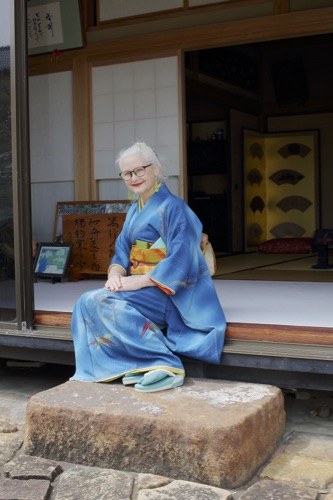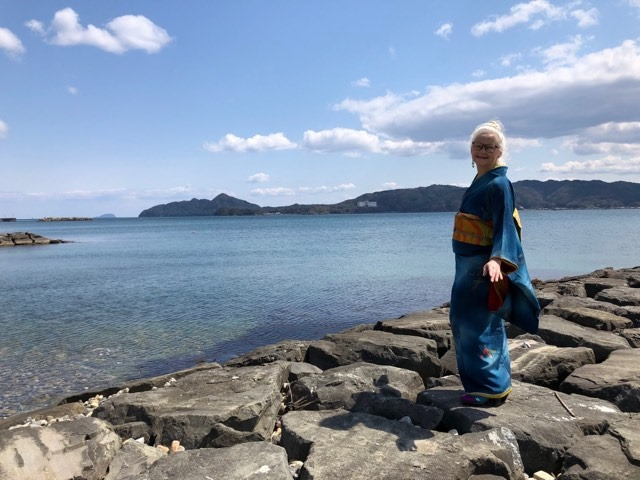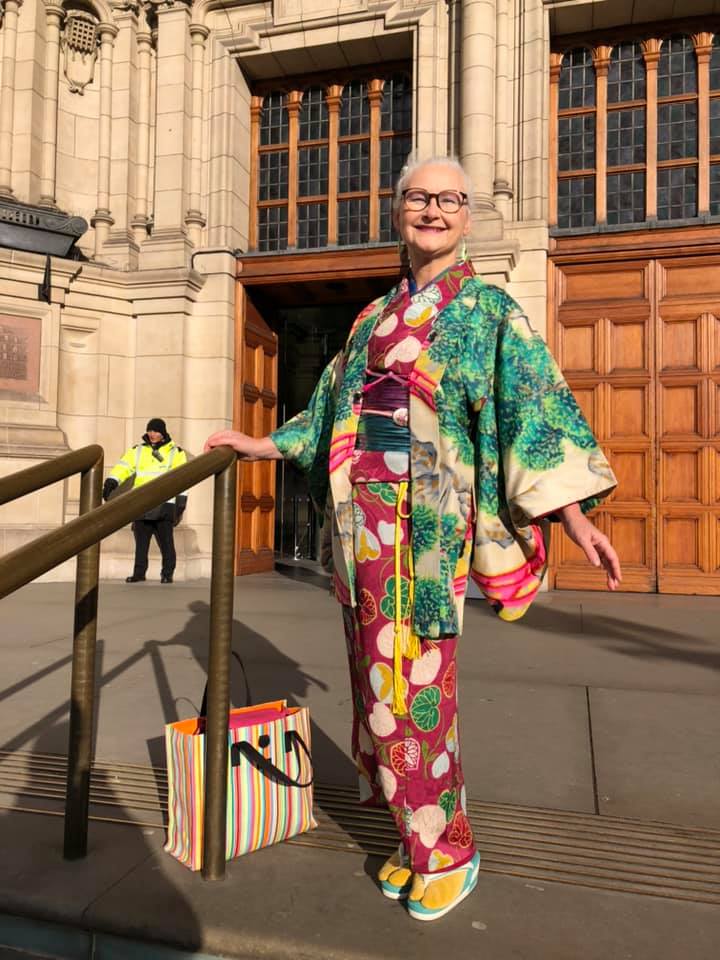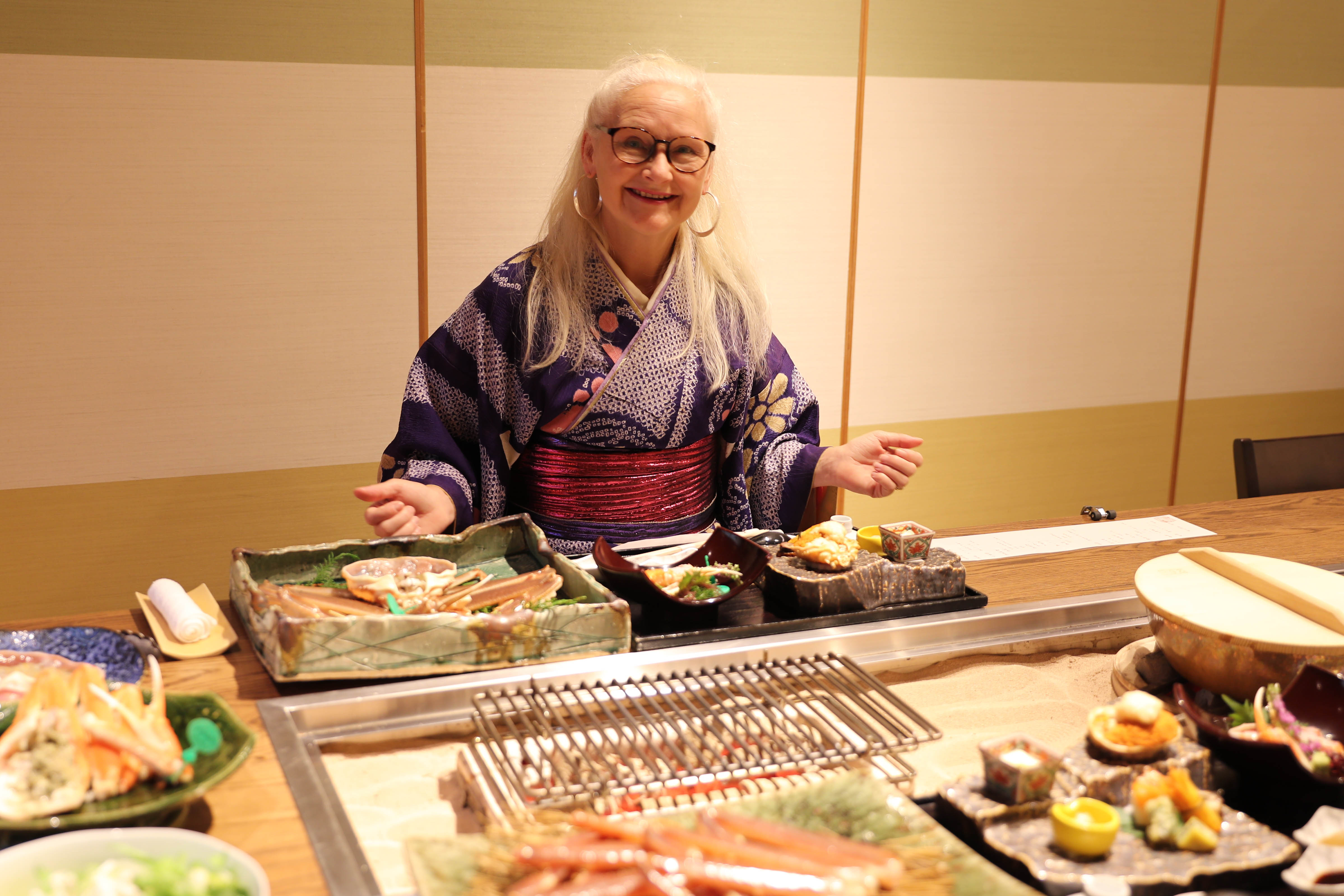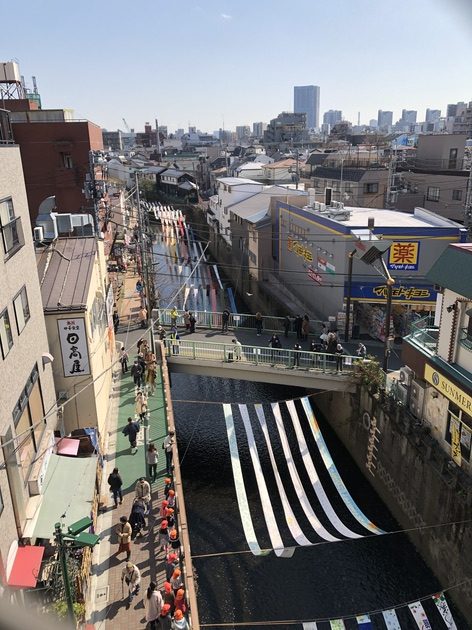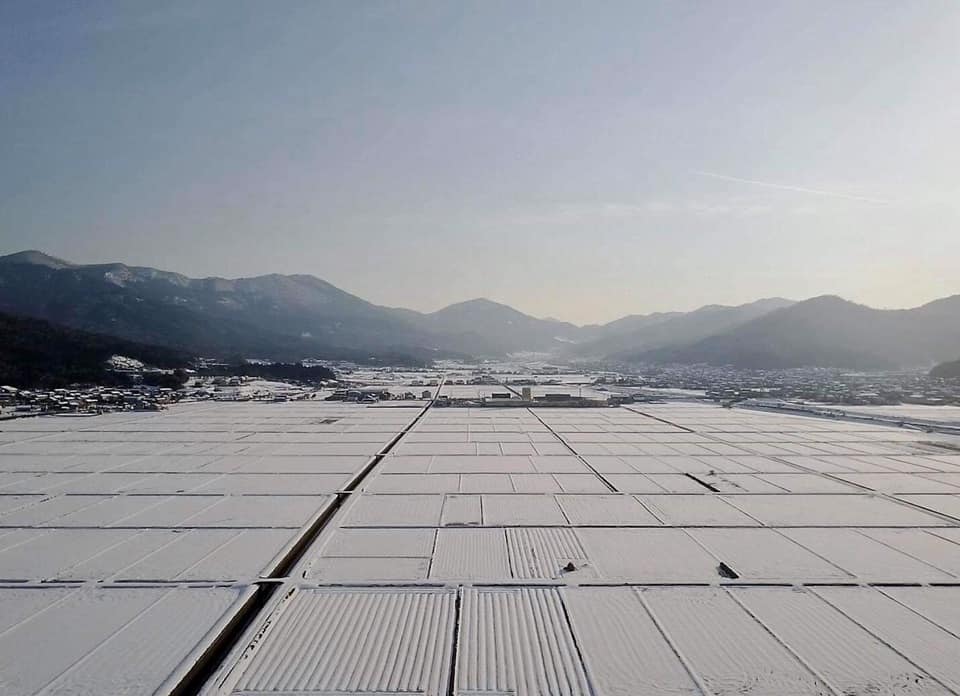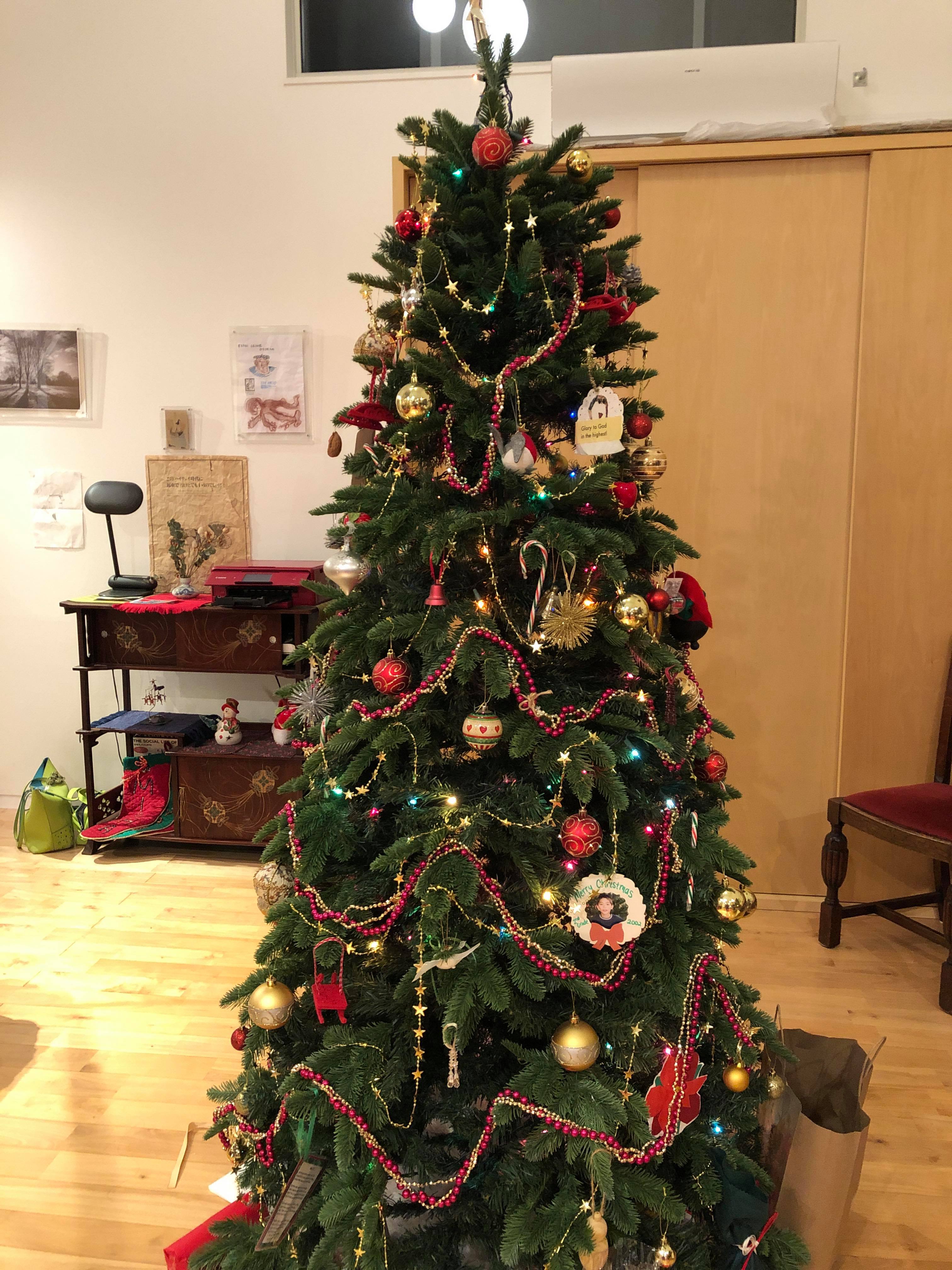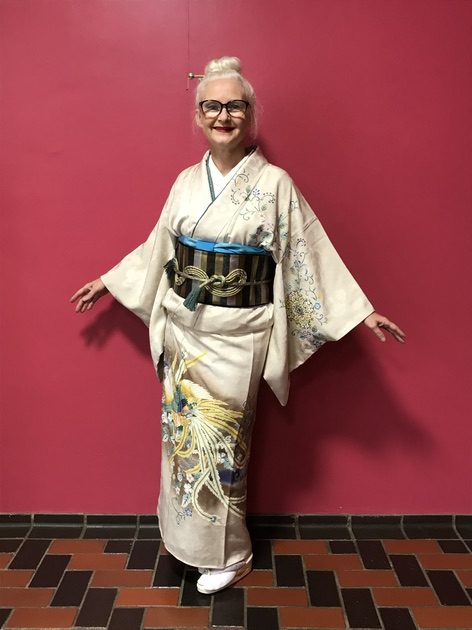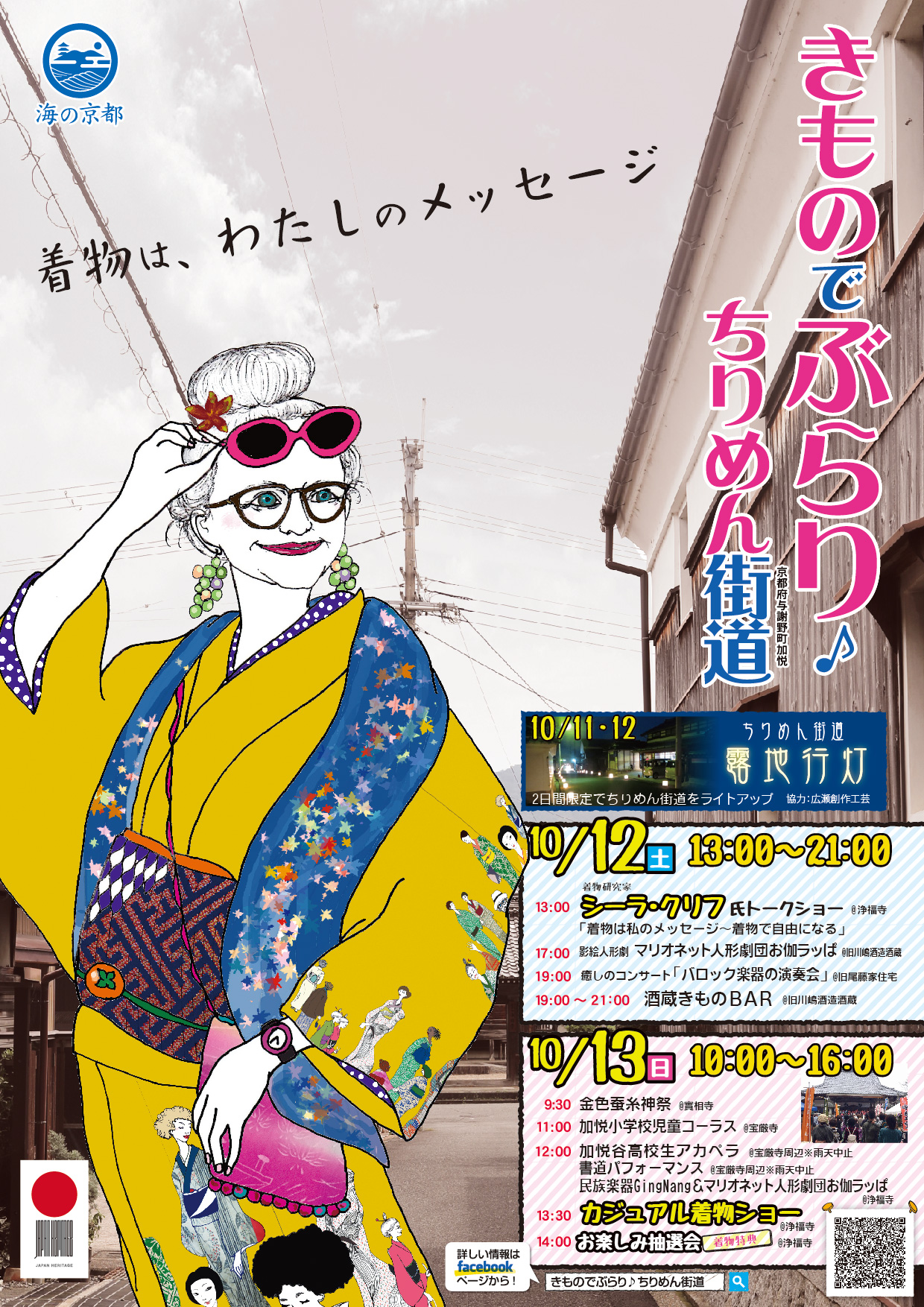
First Encounters with Tango
- AREA
- Kyotango
- Maizuru
- Miyazu
- Yosano
Hi, this is Sheila. This time, I would like to write down about impressions for visiting Tango.
I first came to Tango about ten years ago, to participate in a kimono fashion show. I really didn’t have time to see the area unfortunately, and I had forgotten what it is like. In the early summer of this year, 2019, I was invited to come and explore Tango, to see its sights and also to learn about its history and connections with kimono.
I caught the train to Amanohashidate through Kyoto station from Tokyo. It is said to be one of the three most beautiful places in Japan, and it is hard to argue with that. It is a beautiful sand bar planted with pine trees that makes a beautiful natural bridge across the bay. It is thought to be a bridge down from heaven as legend. The hills are heavily forested here, and the blue water and green land are divided by a ribbon of white sand.

A short journey further along the coast and I arrived in Ine. This is a fishing village where the living accommodation is built over the boat houses, so the people literally live over the water. It’s a ribbon village and has lost none of its old-world charm and simplicity. The small wooden buildings huddle the coast and the houses open onto the water on one side and the narrow street on the other. Fishing is the lifestyle here.


It is a short drive inland to the agricultural Yosano area. It is green and lush, very fertile. Since the Edo period the weaving and dyeing of silk kimono and obi has been a way of life for many people here. Largely family-sized businesses still run the weaving looms that turn out silk for the kimono industry. These days the silk is imported in bales from China or Brazil, but intensive work is performed here. Individuals and artisans dye silk in specially selected plants dyes, or weave threads on hand-looms, complex jacquards are designed and woven for kimono and obi in weaving workshops.
These go all over Japan. The people working here are accomplished both with artistic and design skills, but also with technical and engineering knowledge.
A notable building is the old Bitou family residence, once a busy silk trader’s house. It is located on the Silk Road, where local goods were gathered and then transported to Kyoto.

I recently visited a huge, five story cotton-mill in the UK. Built in the industrial revolution, it was on such a large scale that the humans became slaves to the machines. They toiled with no rest and lived in slums. The cotton for weaving was bought by selling slaves. The impressive mill hides a history of suffering and toil. In comparison with this, there is something refreshing about Tango. Perhaps it is because of the scale of the industry or the nature surrounding it. There is a harmony here between the land, the sea and the people, between science and agriculture and art. This is surely a delicate balance, but I hope that it will remain into the future. I am looking forward to getting to know more about this fascinating and beautiful location that is of such historical and contemporary significance for kimono.
Latest Posts

Yosano Tourist Association
TEL +81-772-43-0155


